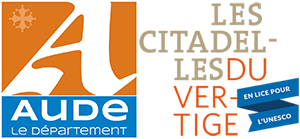Trou percé dans un mur et destiné à recevoir l’extrémité d’une poutre. Nombreux dans les châteaux, ils permettent aux archéologues et historiens de mieux imaginer l’agencement des édifices (présence de planchers, de Hourds, etc.).

Trou percé dans un mur et destiné à recevoir l’extrémité d’une poutre. Nombreux dans les châteaux, ils permettent aux archéologues et historiens de mieux imaginer l’agencement des édifices (présence de planchers, de Hourds, etc.).


| Cookie | Durée | Description |
|---|---|---|
| cookielawinfo-checbox-analytics | 11 months | This cookie is set by GDPR Cookie Consent plugin. The cookie is used to store the user consent for the cookies in the category "Analytics". |
| cookielawinfo-checbox-functional | 11 months | The cookie is set by GDPR cookie consent to record the user consent for the cookies in the category "Functional". |
| cookielawinfo-checbox-others | 11 months | This cookie is set by GDPR Cookie Consent plugin. The cookie is used to store the user consent for the cookies in the category "Other. |
| cookielawinfo-checkbox-necessary | 11 months | This cookie is set by GDPR Cookie Consent plugin. The cookies is used to store the user consent for the cookies in the category "Necessary". |
| cookielawinfo-checkbox-performance | 11 months | This cookie is set by GDPR Cookie Consent plugin. The cookie is used to store the user consent for the cookies in the category "Performance". |
| viewed_cookie_policy | 11 months | The cookie is set by the GDPR Cookie Consent plugin and is used to store whether or not user has consented to the use of cookies. It does not store any personal data. |